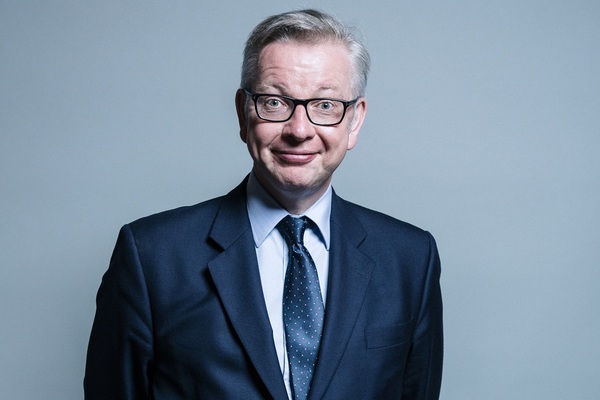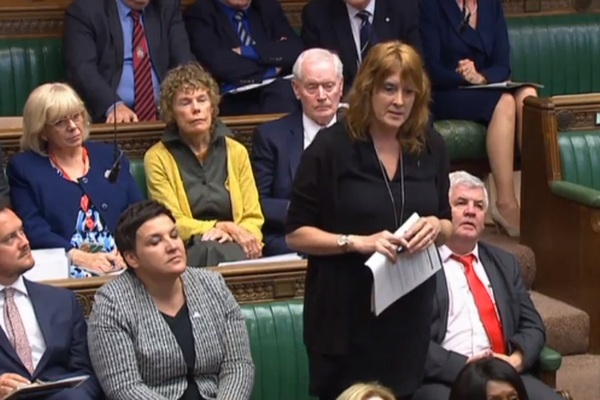You are viewing 1 of your 1 free articles
 Jules Birch
Jules BirchThere is a battle under way for the future of Conservative housing policy
A subplot to the Conservative leadership contest is a battle for the direction of Conservative housing policy, writes Jules Birch
Beneath the surface of a Conservative leadership contest dominated by Brexit and Boris Johnson, there is a battle of ideas about the direction of Conservative housing policy.
Put at its simplest, the battle is about whether to continue in the pragmatic direction signalled by Theresa May since 2016 or go back to the more ideological one taken by David Cameron before then.
But scratch a little deeper, and there is a more fundamental debate going on about how far to go in fixing a housing market that most Tories agree has turned into an electoral liability for them.
Tuesday’s ballot of MPs saw the elimination of Dominic Raab, the one candidate calling for the clock to be turned back.
His call for the Right to Buy to be extended to housing association tenants did not come with a method of paying for the discounts but it was a reminder that the higher-value sales levy is still on the statute books and has not yet been repealed as promised in the Social Housing Green Paper.
Jeremy Hunt, Michael Gove and Rory Stewart have all indicated a willingness to consider more borrowing for investment in new homes, while Sajid Javid supported a similar idea when he was housing secretary. None of them have offered much detail about their plans.
Taking them in order, foreign secretary Mr Hunt wants an additional 1.5 million homes over the next 10 years. It’s not clear whether that means ‘additional’ to the government’s already challenging target existing target of 300,000 (taking the total to 450,000). However, even if he means additional to current output of 222,000 a year, a total of 372,000 would be higher than the post-war peak of 352,000 in 1969.
“Scratch a little deeper, and there is a more fundamental debate going on about how far to go in fixing a housing market that most Tories agree has turned into an electoral liability for them”
So where would his extra homes come from? It seems unlikely that he means council housing (200,000 of those homes in 1969) or social housing more generally.
Free market reform of green belt rules also seems unlikely from a Surrey MP, so that leaves new towns, a big Rent to Buy programme or maybe even the revival of another of Mr Cameron’s failed ideas, Starter Homes.
Environment secretary Mr Gove indicated a willingness to consider social housing in the 2016 leadership election and this time he is calling for a National Housing Fund to buy land funded by selling Brexit bonds.
And international development secretary Mr Stewart has made housing an exception to his cautious fiscal stance with an eye-catching pledge that: “I would borrow to build two million more houses. But I would only borrow against marketable assets like houses – which the government can then rent out or sell.”
Mr Stewart says he would build the homes in just five years in a new generation of new towns and ‘lineal cities’ along the Thames. He would “follow the Milton Keynes model, with a mix of homes to sell or rent” financed through bonds raised against them.
Home secretary Mr Javid has not said much about housing this time but he has called for economic stimulus in an emergency no-deal budget and pushed a £50bn Rent to Buy plan when he was housing secretary.
Boris Johnson, the man way out in front of these also-rans for a place on the final ballot of Tory members, has not yet pronounced on housing in this campaign (at least that I can find) beyond making questionable claims about his record as London mayor.
The best clues to what he really thinks about housing came in a speech to a fringe meeting at last year’s Conservative conference.
On the same day as Theresa May was announcing the end of the borrowing cap, he was presenting council housing as the cause of poor housing conditions and the Right to Buy as the cure.
Beyond that, his priority of an expensive cut in the top rate of income tax will mean less room for manoeuvre for whoever becomes his chancellor.
That’s a reminder that a new prime minister could mean a complete change in the key people making decisions, with new ministers at the Treasury; the Ministry of Housing, Communities and Local Government; and the Department for Work and Pensions.
There will be also be sweeping changes in Downing Street as key advisors to Ms May, including her chief of staff and former housing minister Gavin Barwell, leave with her.
“Fire safety and the cladding scandal will continue to be at the top of the housing agenda but campaigners are already accusing the government of not keeping its promises”
Mr Johnson has hinted at reassembling the team that helped him in London, and his deputy mayors included housing minister Kit Malthouse, Homes England chair Sir Edward Lister and Homes England non-executive director and Policy Exchange advisor Richard Blakeway.
Among his many supporters in the parliamentary party are housing secretary James Brokenshire and former housing minister Alok Sharma.
Another familiar face, Grant Shapps, is part of Mr Johnson’s campaign team and is credited with coming up with the spreadsheet that has accurately predicted voting by MPs.
With scope for little more than Brexit until 31 October, it could take some time for the real shape of the new government to emerge.
However, looking further beneath the surface, the future direction of housing policy is also being debated in the Tory thinktanks.
Policy Exchange, the source of so many of the year-zero ideas on social housing up to 2016, took a very different line in a report published last week advocating new towns, beautiful design and support for first-time buyers. The report was endorsed by both Mr Johnson and Mr Gove.
Meanwhile, Onward, Create Streets and Civitas all contributed chapters to a new collection of essays on land reform published by Shelter.
The case for a greater share of the land value created by planning permission to go to affordable housing and infrastructure rather than landowners and house builders has attracted support from across the political spectrum and made it onto the government’s agenda via the Letwin Review.
Those are just two examples of how the ideological climate has changed for housing since 2016.
The biggest is, of course, the response to Grenfell. Fire safety and the cladding scandal will continue to be at the top of the housing agenda, but campaigners are already accusing the government of not keeping its promises.
Big decisions are also due on the response to the Social Housing Green Paper and ending Section 21. If we ever emerge from the fog of Brexit, which way will the new government jump?
Jules Birch, award-winning housing columnist











